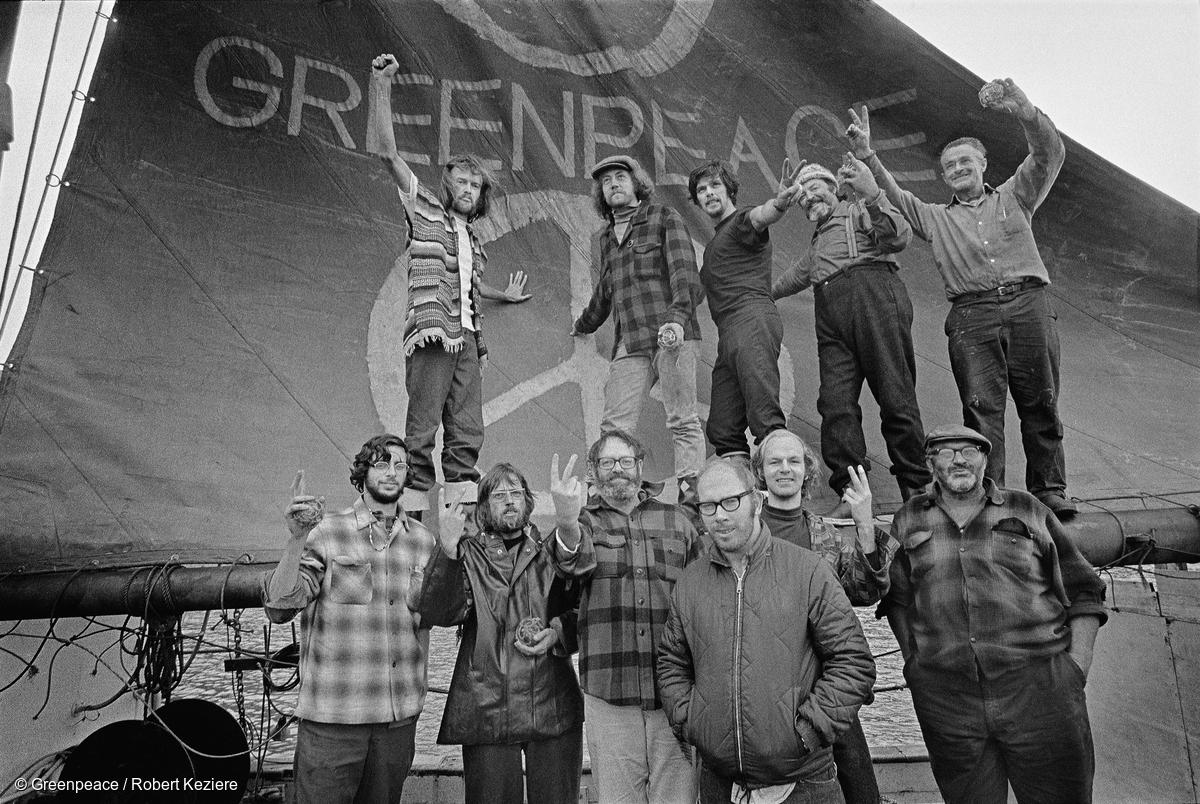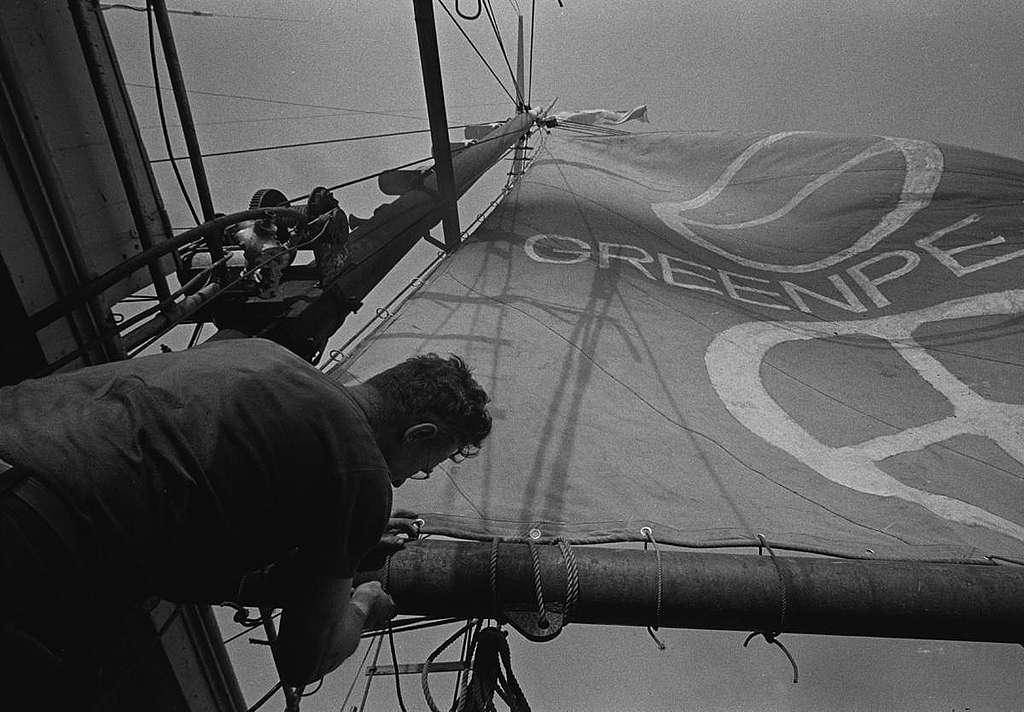The History of Greenpeace
In 1971, a small team of activists set sail from Vancouver, Canada, in an old fishing boat. Their mission: to protest underground nuclear testing by the US military at Amchitka, a tiny volcanic island off western Alaska. Though they were eventually stopped, these activists went on to create an organization called Greenpeace, with the belief that individual, non-violent action can create positive change.


Amchitka was prone to earthquakes, and the activists feared the underground explosion – the third such nuclear test on the island – would trigger devastating earthquakes and tsunamis. The island was also the last refuge for 3,000 endangered sea otters, and home to bald eagles, peregrine falcons and other wildlife.
En route to Amchitka, aboard their boat the Phyllis Cormack, founding member Bob Metcalfe called CBC radio and made a statement. “We call our ship the Greenpeace because that’s the best name we can think of to join the two great issues of our times, the survival of our environment and the peace of the world […] We do not consider ourselves to be radicals. We are conservatives, who insist upon conserving the environment for our children and future generations.”
It was another founding member, Bill Darnell, who coined the organization’s name when someone flashed him a peace sign and he said, “Let’s make that a green peace!”
Before Greenpeace arrived at Amchitka, the boat was intercepted by a U.S. navy ship and forced to turn back. When the activists returned to Vancouver, they learned their inaugural action had sparked a flurry of public interest and generated widespread compassion for their cause.
The U.S. still detonated the bomb, but the voice of reason had been heard. Nuclear testing on Amchitka ended that same year, and the island was later declared a bird sanctuary.
Throughout the 1970s, Greenpeace spread to several countries and began campaigning on various environmental issues, including commercial whaling and toxic waste. In 1979, Greenpeace International was formed and is today based in Amsterdam.
Today, Greenpeace is an international organisation that prioritises global environmental campaigns. Based in Amsterdam, the Netherlands, Greenpeace has nearly 3 million supporters worldwide, and national as well as regional offices in 40 countries.
Greenpeace in East Asia
Greenpeace has been in East Asia since 1997 to fight climate change, stop toxic pollution, ensure food security, end illegal deforestation and defend the oceans.
Greenpeace has offices in Hong Kong, Beijing, Taipei and Seoul. Environmental problems know no borders, and Greenpeace recognizes the importance of regional offices that work together to achieve effective solutions for a sustainable future.
Surging economic development in East Asia has brought widespread prosperity, but has also taken a severe environmental toll, both regionally and in the world. Greenpeace is committed to ensuring a green development pathway together with the people of China Mainland, Hong Kong, Taiwan and South Korea.
Our work in East Asia
Climate change is our priority here, starting with our early campaign to tackle Hong Kong’s largest electricity provider, China Light & Power. Now, we are working hard to push China to quit coal, which supplies 70% of the country’s energy and produces 80% of its carbon dioxide emissions. Greenpeace is working to catalyze a renewable energy revolution in China – which has vast untapped potential for solar and wind energy.
We have also targeted industrial pollution in China. Industrial water pollution continues to be a key focus of our campaigns, with projects focusing on the textiles industry, Yangtze River pollution, electronic waste and factory production.
Meanwhile, our Food & Agriculture team focuses on ensuring safe, sustainable agriculture for East Asia. We lobby against genetically engineered crops and the use of pesticides and fertilizers. Research shows that ecological, sustainable agriculture will be sufficient to feed China – and the world. We have made huge strides by convincing many supermarkets in China and Hong Kong – such as Carrefour, Auchan and Walmart – to stop selling genetically engineered rice, as well as foods farmed with the most hazardous pesticides.
Our Forests team has helped expose the link between East Asia’s demand for timber and paper products and widespread, illegal deforestation in Indonesia, Madagascar and the Congo. We continue to document and expose deforestation in East Asia, and campaign for corporations to source forest-friendly paper and timber products.
Opened in 2010, Greenpeace’s Taiwan office works on the Forests and Oceans campaign. As part of our work to protect the dangerously overfished bluefin tuna, Taiwan welcomed the Rainbow Warrior on the “Defending our Pacific” tour. From engaging the public about the endangered bluefin to lobbying the government, we are working for stricter regulations for Taiwan’s massive fishing fleet, which are depleting the Pacific Ocean of its tuna. And as we continue to grow in Taiwan and South Korea, we look forward to sharing more stories with you.
Head here to read a full run down of Greenpeace East Asia’s achievements.
